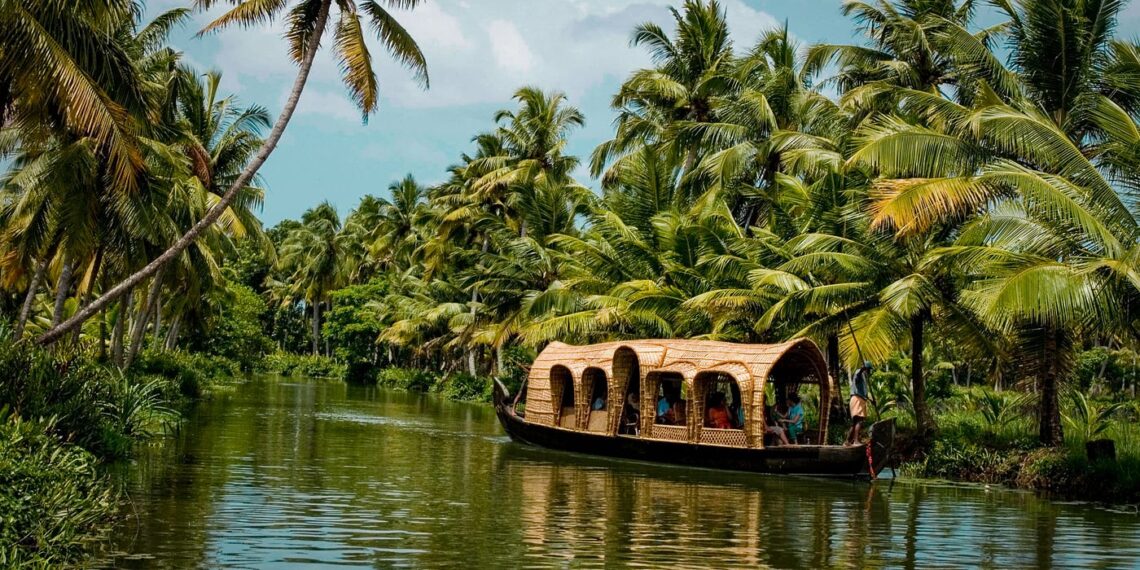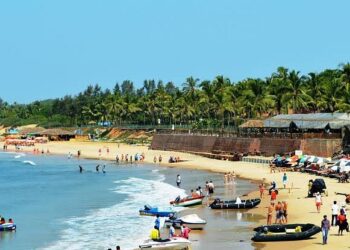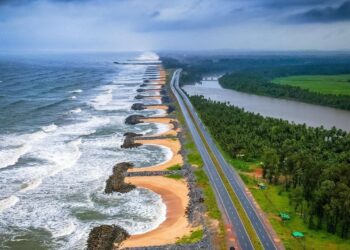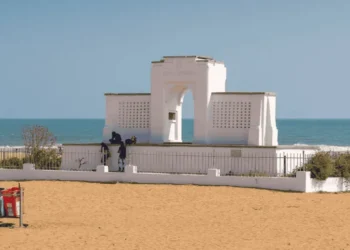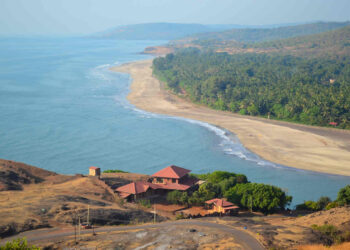Some places demand your attention—neon lights, honking traffic, the rush of bodies always in a hurry. Not the Kerala Backwaters. Here, Canals, lakes, rivers—900 kilometers of wet sprawl along the coast. Vembanad Lake’s the king—Alleppey and Kumarakom cling to it, boats drifting slow. Kerala’s emerald maze of canals, lagoons, and lakes isn’t just a destination—it’s a mood, a slow dance between man and nature.
Getting There: Finding Your Way to the Water
By Air
Cochin International Airport (COK) is your best bet, a gateway to the backwaters. From there, Alleppey (Alappuzha), the heart of the backwaters, is a 90-minute drive (₹1,500-₹2,500 by taxi). If you’re heading to Kumarakom, add another 30 minutes.
By Train
Alleppey and Kottayam are the main railway stations linking Kerala’s inland with its water highways. Trains from major cities like Bangalore, Chennai, and Mumbai roll in daily. The best part? The ride itself is a teaser—windows framing endless stretches of coconut palms, rice paddies, and glimmers of water teasing the journey ahead.
By Road
National Highway 66 snakes through Kerala’s coastal belt. Buses (₹200-₹800) ply regularly from Kochi, Trivandrum, and Bangalore, but the real magic begins when you trade asphalt for water.
The Backwaters Experience: What’s Waiting for You Houseboats: Floating Homes of Another Era
You haven’t truly done the backwaters until you’ve drifted through them in a kettuvallam—a traditional houseboat. These wooden beauties, once used to ferry rice and spices, now cater to wanderers seeking quiet luxury. Some are simple, with cane chairs and kerosene lamps; others have AC, a private deck, and even a personal chef flipping Karimeen (pearl spot fish) straight from the pan to your plate. Prices range from ₹7,000 to ₹25,000 a night—budget or blowout, the experience is worth every rupee.
Canoes & Shikaras: The Silent Way In
Houseboats are grand, but for the real Kerala, take a canoe or a shikara (small wooden boat). These glide where big boats can’t—through narrow canals shaded by drooping palm fronds, past village homes where kids splash in the shallows, and old men sit knee-deep in water, fishing as they’ve done for centuries. Rates hover around ₹500-₹1,500 per hour, depending on how deep into the labyrinth you want to go.
Villages on Water: Living the Backwater Life
Forget five-star hotels—here, the best stays come with woven palm roofs and warm smiles. Homestays in villages like Kainakary and Champakulam let you wake to the scent of fresh appams and the sight of lotus-covered ponds. No itinerary, no rush—just a slow morning with coconut toddy and the lull of lapping water. ₹1,500-₹4,000 a night, and you’re family by the time you leave.
What to See: Beyond the Boat Alleppey: The Venice of the East
If Kerala’s backwaters have a poster child, it’s Alleppey. A web of canals crisscrosses the town, where houseboats bob lazily and Chinese fishing nets frame the sunset. Walk through its market streets, alive with the scent of cardamom and dried fish, or watch snake boat races during Onam—longboats slicing through water with synchronized fury.
Kumarakom: Birdsong and Stillness Less touristy than Alleppey, Kumarakom is a dream for bird lovers. The Kumarakom Bird Sanctuary hums with the chatter of herons, egrets, and the occasional Siberian visitor escaping the Russian cold. The Vembanad Lake here is Kerala’s largest, stretching so wide it feels like an ocean pretending to be a lake.
Munroe Island: The Road (or Canal) Less Taken Tucked away near Kollam, Munroe Island is where the backwaters stay pure—no honking houseboats, no crowds. Just quiet villages, hidden mangroves, and locals who’ll share their toddy if you ask nicely. Canoe tours here (₹800-₹1,200) are the closest you’ll get to seeing the backwaters before tourism touched them.
Backwater Flavors: Eat Like a Local
Food in the backwaters isn’t just good—it’s an experience, cooked slow and with stories behind every spice.
Karimeen Pollichathu – A whole pearl spot fish, marinated, wrapped in banana leaves, and roasted to perfection. Best eaten by a backwater shack with your fingers.
Meen Curry (Fish Curry) – Tangy, coconut-infused, and red from Kashmiri chili. A staple on every houseboat.
Puttu & Kadala – Cylindrical steamed rice cakes paired with black chickpea curry. A breakfast that sticks with you.
Toddy – A local coconut-based alcoholic drink—mild, cloudy, and best sipped from a riverside shack.
When to Go: Timing Your Escape Best Season:
November to February—cooler, drier, and the water glows under the winter sun.
Worst Season: June to September—unless you like rain lashing against your boat and rivers swelling with monsoon fury.
Sweet Spot: August—monsoon retreats, leaving everything lush, and Onam brings festivals, snake boat races, and feasts.
Practical Tips:
Backwater Survival Guide Pack Light, Think Local – Cotton clothes, sandals, a hat, and a power bank (electricity can be iffy). Leave the rolling suitcase—backwaters aren’t kind to wheels.
Mosquitoes Love Tourists – Bring repellent or prepare to be a buffet.
Go Offbeat – Everyone does Alleppey. Try the smaller canals, the lesser-known villages. The best stories aren’t in the guidebooks.
Respect the Water – No littering. The backwaters are a lifeline, not just a tourist stop.
Haggle, But Not Too Hard – Whether it’s a canoe ride or a fresh coconut, a little bargaining is fine, but don’t squeeze out the extra ₹50 from someone making a living.
Final Thought: Why the Backwaters Stay With You
Kerala’s backwaters aren’t a checklist destination. You don’t come here to do things—you come here to let go. To drift, to listen, to sink into a world that refuses to rush. Maybe it’s the rhythm of the oars, the smell of coconut oil in the air, or the way the water mirrors the sky so perfectly you forget where one ends and the other begins. Maybe it’s just the magic of slow travel, where you arrive as a visitor but leave as someone who finally remembers how to breathe. Come, float, and let the backwaters do the rest.
